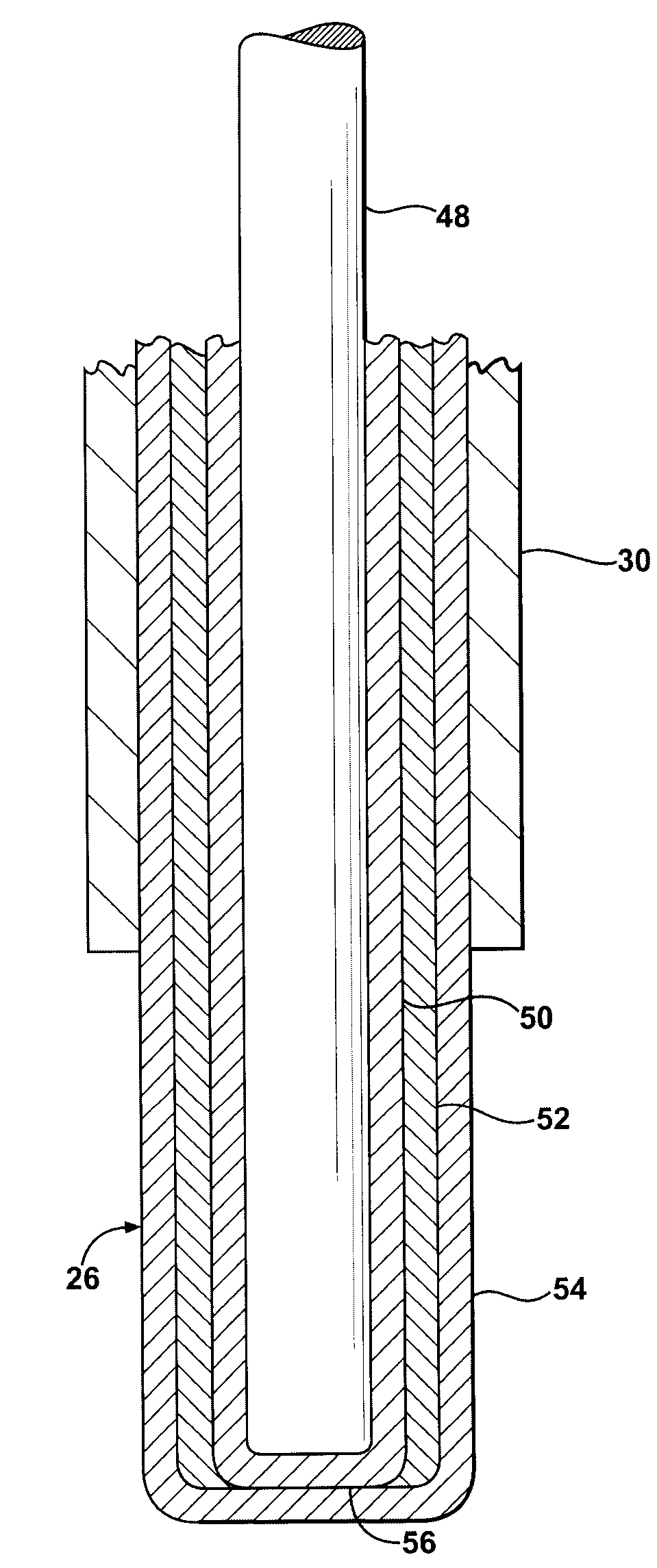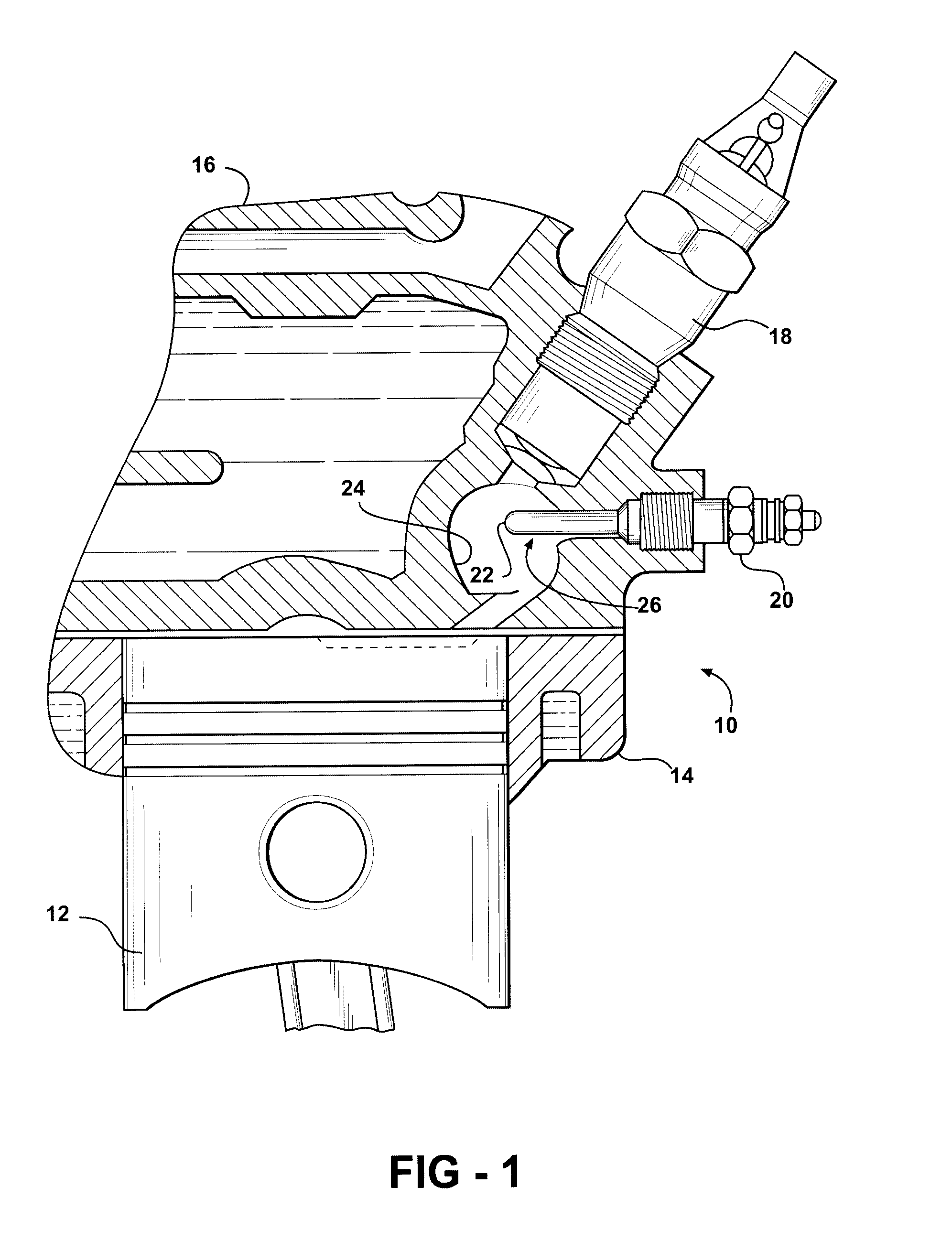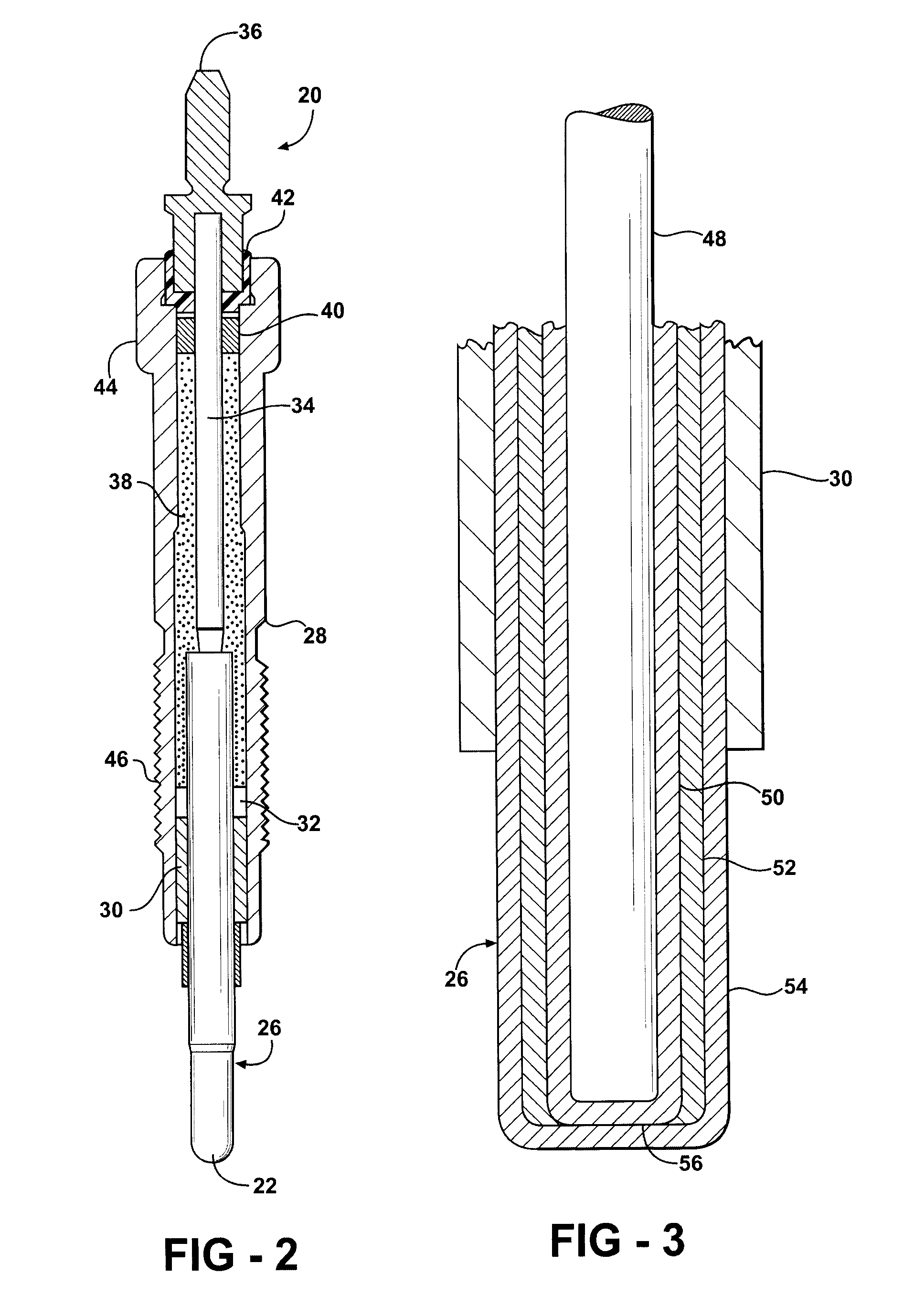Method of fabricating a multilayer ceramic heating element
a ceramic heating element and multi-layer technology, applied in the direction of superimposed coating process, liquid/solution decomposition chemical coating, lighting and heating apparatus, etc., can solve the problems of large heat loss of combustion process to the cold combustion chamber walls, difficult production of exotic materials in high volume production settings, and completely compatible with other materials, so as to achieve small variations in thickness or composition
- Summary
- Abstract
- Description
- Claims
- Application Information
AI Technical Summary
Benefits of technology
Problems solved by technology
Method used
Image
Examples
Embodiment Construction
[0018]Referring to the Figures, wherein like numerals indicate like or corresponding parts throughout the several views, a diesel engine is generally shown at 10 in FIG. 1. The engine 10 includes a piston 12 reciprocating in a cylinder. The cylinder is formed in a block 14. A cylinder head 16 covers the block 14 to enclose a combustion chamber. An intake manifold routes through the cylinder head 16 and includes a fuel injector 18 which, at timed intervals, delivers a charge of atomized fuel into the combustion chamber. A glow plug, generally indicated at 20, includes a high temperature tip 22 positioned, in this example, within a pre-combustion chamber 24. The arrangement of components as illustrated in FIG. 1 is typical of one configuration style for a diesel engine. However, there are many other diesel engine types for which a glow plug 20 according to the invention is equally applicable. Furthermore, many other types of devices can utilize the subject glow plug 20, such as space ...
PUM
| Property | Measurement | Unit |
|---|---|---|
| thicknesses | aaaaa | aaaaa |
| thicknesses | aaaaa | aaaaa |
| thickness | aaaaa | aaaaa |
Abstract
Description
Claims
Application Information
 Login to View More
Login to View More - R&D
- Intellectual Property
- Life Sciences
- Materials
- Tech Scout
- Unparalleled Data Quality
- Higher Quality Content
- 60% Fewer Hallucinations
Browse by: Latest US Patents, China's latest patents, Technical Efficacy Thesaurus, Application Domain, Technology Topic, Popular Technical Reports.
© 2025 PatSnap. All rights reserved.Legal|Privacy policy|Modern Slavery Act Transparency Statement|Sitemap|About US| Contact US: help@patsnap.com



